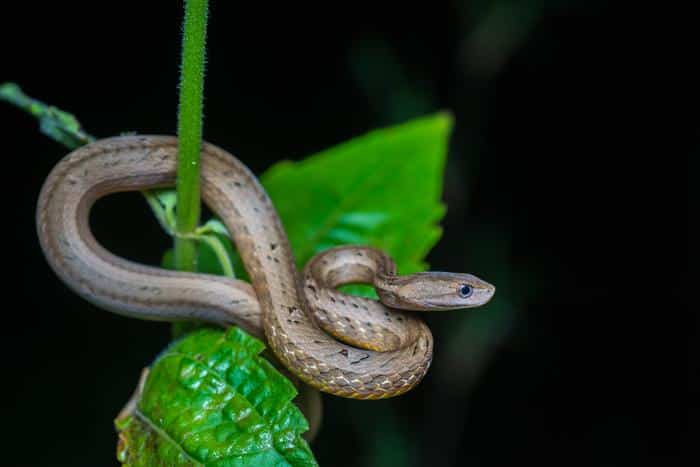Researchers with the University of Helsinki have placed two rear-fanged, mildly venomous mock vipers from Southeast Asia into a new snake family called Psammodynastidae.
Researchers with the University of Helsinki have placed two rear-fanged, mildly venomous mock vipers from Southeast Asia into a new snake family called Psammodynastidae.
The mildly venomous, Psammodynastes pictus and P. pulverulentus are rear fanged snakes that researchers say not only look like tree dwelling vipers but also mimic the behaviors of the arboreal vipers and even possess what the researchers call a fake front fang. These mock vipers use that mock front fang in threat displays toward potential predators, the researchers said. While these snakes are often placed within Elapoidea, the researchers have assigned a new family to the rear fanged snakes, Psammodynastidae.
Colubrid Snake Changes Eye Pupils To Emulate Malayan Pit Viper
“Mock vipers are part of the superfamily Elapoidea, a major group of snakes to which one-fifth of global serpent diversity belongs. Evolutionary diversification within this superfamily happened very rapidly approximately 50 million years ago. Rapid evolutionary diversifications are probably the most challenging evolutionary scenario for a geneticist or evolutionary biologist to resolve,” Sunandan Das lead researcher from the University of Helsinki said in a statement released by the university.
The two species are found throughout much of South and Southeast Asia as well as in the Indonesian Archipelago. The aim of their study is to “resolve the phylogenetic relationships of the genera Psammodynastes and Buhoma within the Elapoidea and to make appropriate taxonomic and nomenclatural decisions regarding these two genera.”
The complete paper, “Phylogenomics of Psammodynastes and Buhoma (Elapoidea: Serpentes), with the description of a new Asian snake family” can be read in the Scientific Reports journal on Nature.com.



